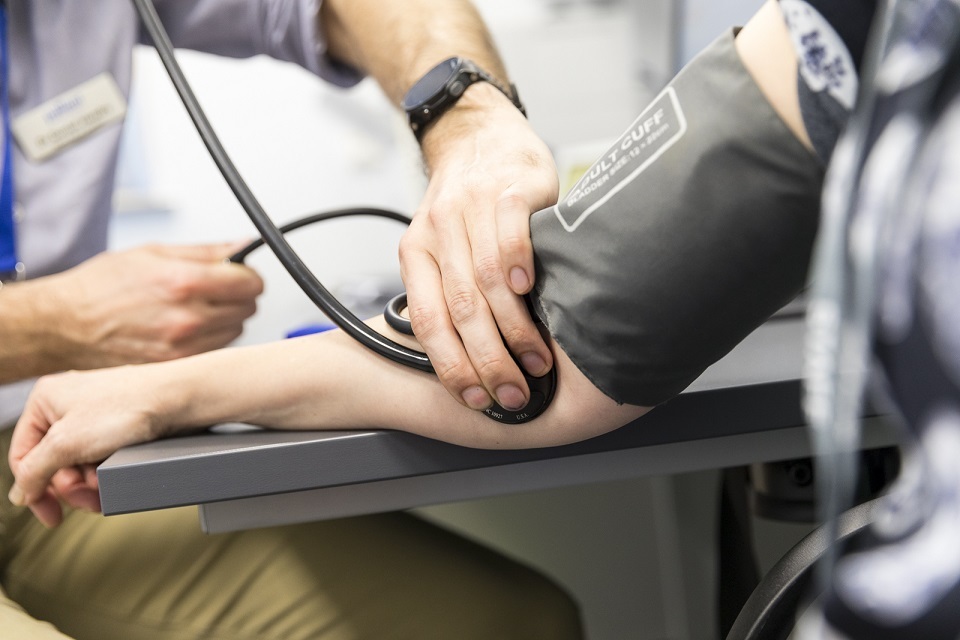Shifting Healthcare: Neighbourhood Services Tackling Health Inequalities
In the bustling heart of Sunderland, Frank, a 67-year-old man with multiple chronic illnesses, reflects on his recent healthcare journey. Just a year ago, he was caught in an exhausting loop of hospital visits, overwhelmed by a fragmented system that offered little in the way of coordinated care. “I felt like I was a number, just another voice in a crowd,” he says, shaking his head. “Now, it feels like I’m heard.” This transformation is set to replicate across 43 areas in England, as the government launches an ambitious initiative designed to rethink how healthcare is delivered, focusing squarely on communities grappling with health inequalities.
Rethinking Health Delivery
The new neighbourhood health services aim to enhance access to healthcare for some of the most deprived populations, those who often languish on waiting lists and experience the lowest life expectancy. Wes Streeting, the Health and Social Care Secretary, describes this initiative as essential for building “an NHS fit for the future,” claiming that it will “bring care closer to home” and tackle “the nation’s shameful health inequalities.”
The proposed model prioritizes integrating various healthcare professions, including general practice, community nursing, social work, and mental health services, thereby creating comprehensive neighbourhood health teams. This step will shift the traditional focus from hospital-centric care to community-based solutions, ensuring that individuals receive tailored support without navigating a cumbersome collection of referrals.
The Framework of Neighbourhood Care
With an initial funding boost of £10 million, the first wave of this programme will roll out on September 9, 2025. The 43 pioneer areas, stretching from Cornwall and the Isles of Scilly to Sunderland, have been selected based on urgent health needs. Each region will have a dedicated programme lead responsible for local partnerships and tailoring services to meet specific community requirements.
Profile of Health Teams
The concept relies on assembling multidisciplinary teams that include:
- General practitioners
- Community nurses
- Social care workers
- Pharmacists
- Optometrists
- Paramedics
- Local government representatives
- Voluntary sector organizations
Recent evidence suggests these integrated models can significantly reduce hospital admissions. According to a study conducted in London, community health services decreased A&E admissions by 7% and hospital stays by 10% in their first year. Such statistics underline the potential impact of neighbourhood health services on patient care outcomes, especially in areas with long-standing health disparities.
Case Studies Demonstrating Impact
Consider Veena, a 35-year-old mother struggling with mental health issues compounded by inadequate housing. In the past, she relied heavily on the A&E for all of her healthcare needs. “It felt like there was nowhere else to go,” Veena admits. Under the new neighbourhood service model, she now has immediate access to same-day GP appointments and tailored childcare support, including consultations with paediatric specialists. Her life has transformed as local health workers not only address her medical issues but also help tackle the systemic barriers exacerbating her situation.
This framework extends beyond mere healthcare delivery; it involves a strategic focus on social determinants of health. As Rankine points out, “This programme not only aims to treat the illness but addresses the underlying issues affecting individuals’ wellbeing.” By coordinating support services, neighbourhood health teams can effectively steer people away from the healthcare system’s cracks—an issue particularly critical for regions that have traditionally been underserved.
The Road Ahead
Though the initial rollout covers only 43 areas, the long-term ambition is to expand this community-centric healthcare model nationally. The Patient Association’s Chief Executive highlights that these neighbourhood services offer “a strategic opportunity to address the unjust experiences many patients face because of where they live.” A critical element for success will be ensuring that local communities are not just recipients of services but active participants in shaping them.
Challenges and Predictions
Despite this optimistic outlook, several challenges loom ahead. The healthcare sector will require robust funding and a commitment to collaborate with local voluntary and community organizations. Daniel Elkeles, Chief Executive of NHS Providers, insists that genuine success depends on the ability of local bodies to innovate within this framework, stating, “Transforming services to provide tailored healthcare is not just an ambition; it’s a necessity.” Stakeholders must harness local knowledge and deliver services that truly reflect the needs of their communities.
As the pilot areas launch, all eyes will be on their performance and the lessons learned from these pioneering neighbourhood health services. For individuals like Frank and Veena, the aim is clear: to create a model of healthcare that is not only efficient but profoundly compassionate and responsive to the unique challenges of their lives. Only time will tell if these neighbourhood health teams can deliver on their promise, but for many communities, this initiative offers a glimmer of hope amid a landscape of chronic disparities.
Source: www.gov.uk


